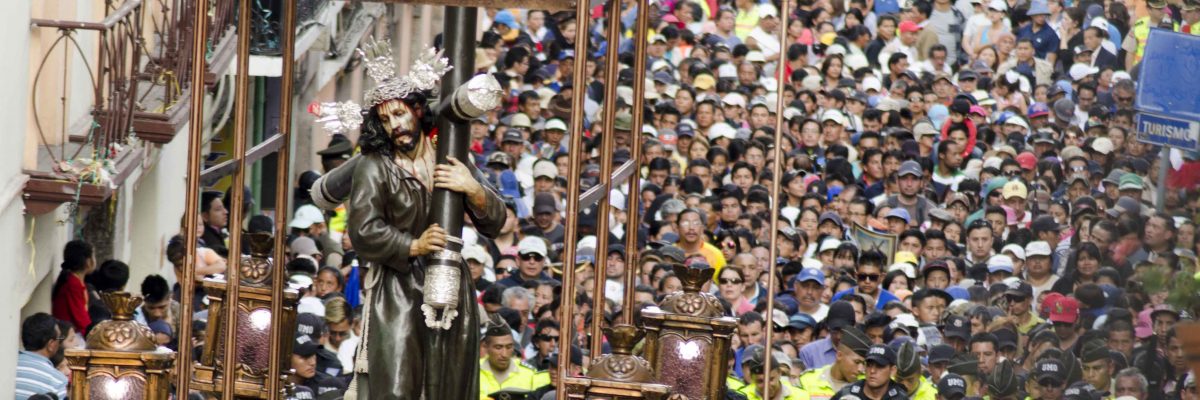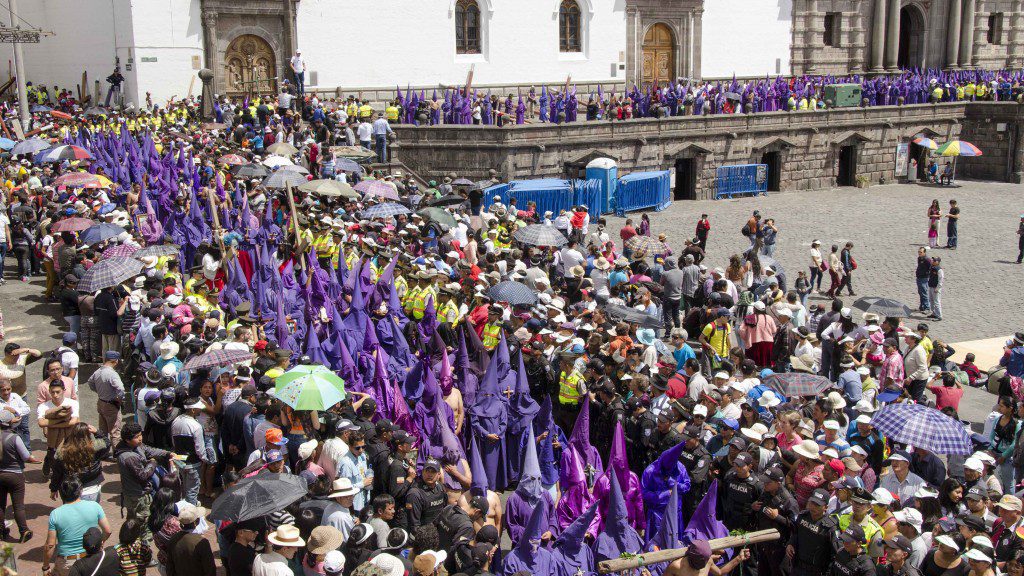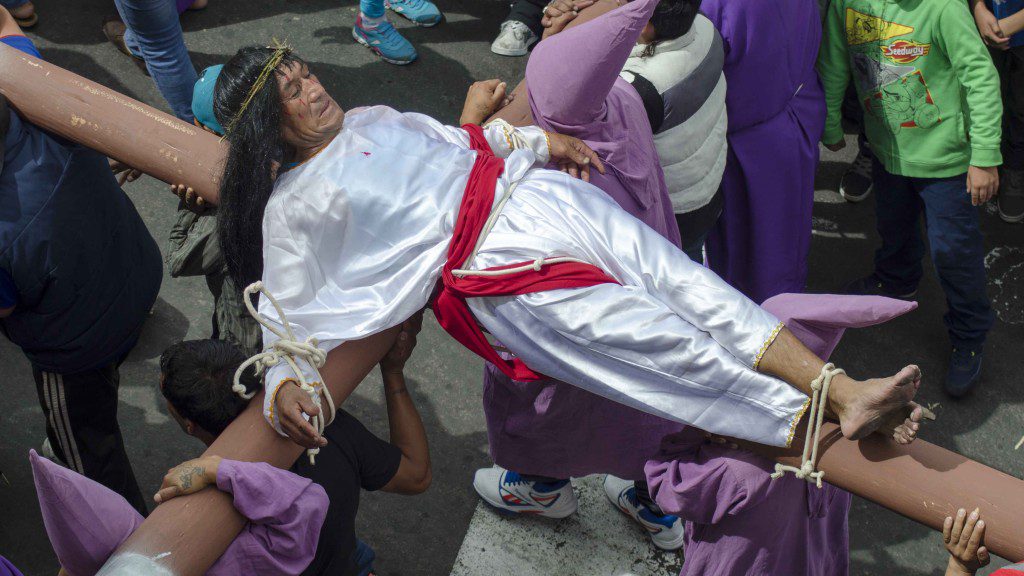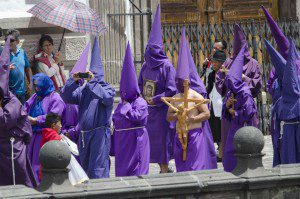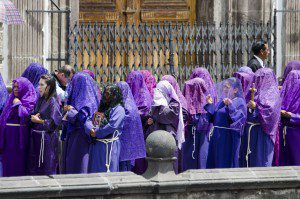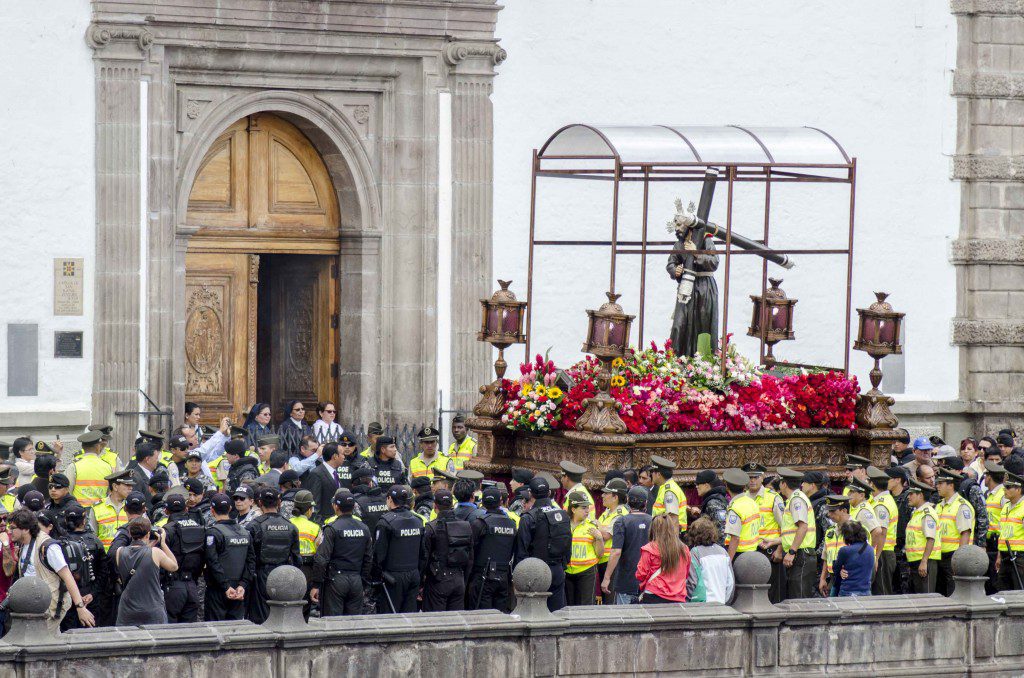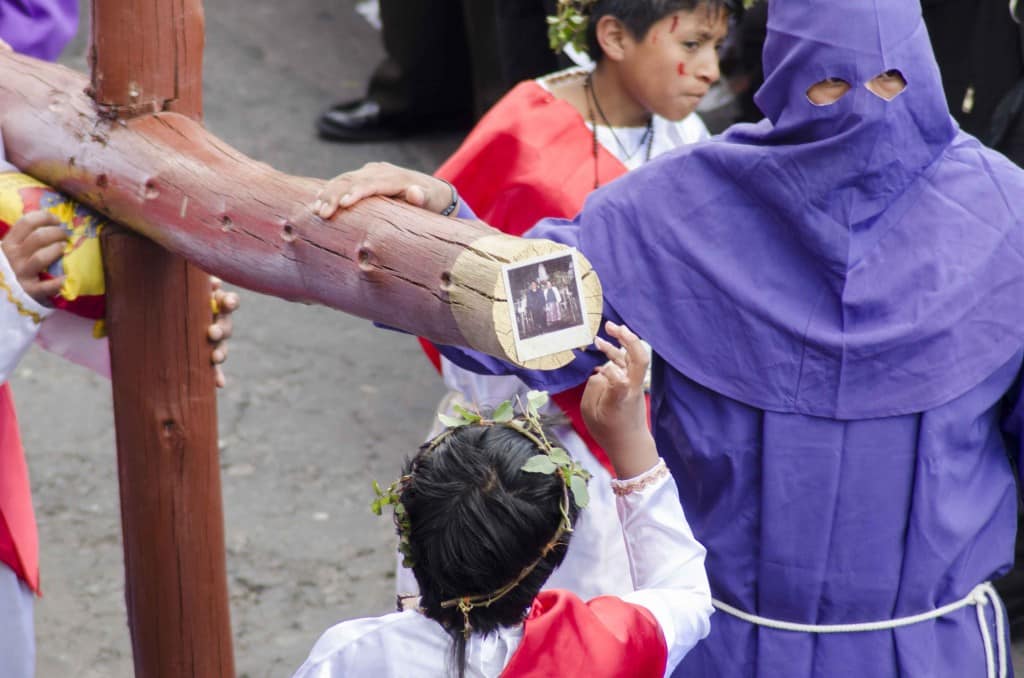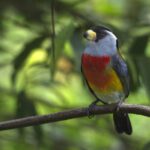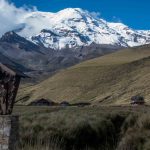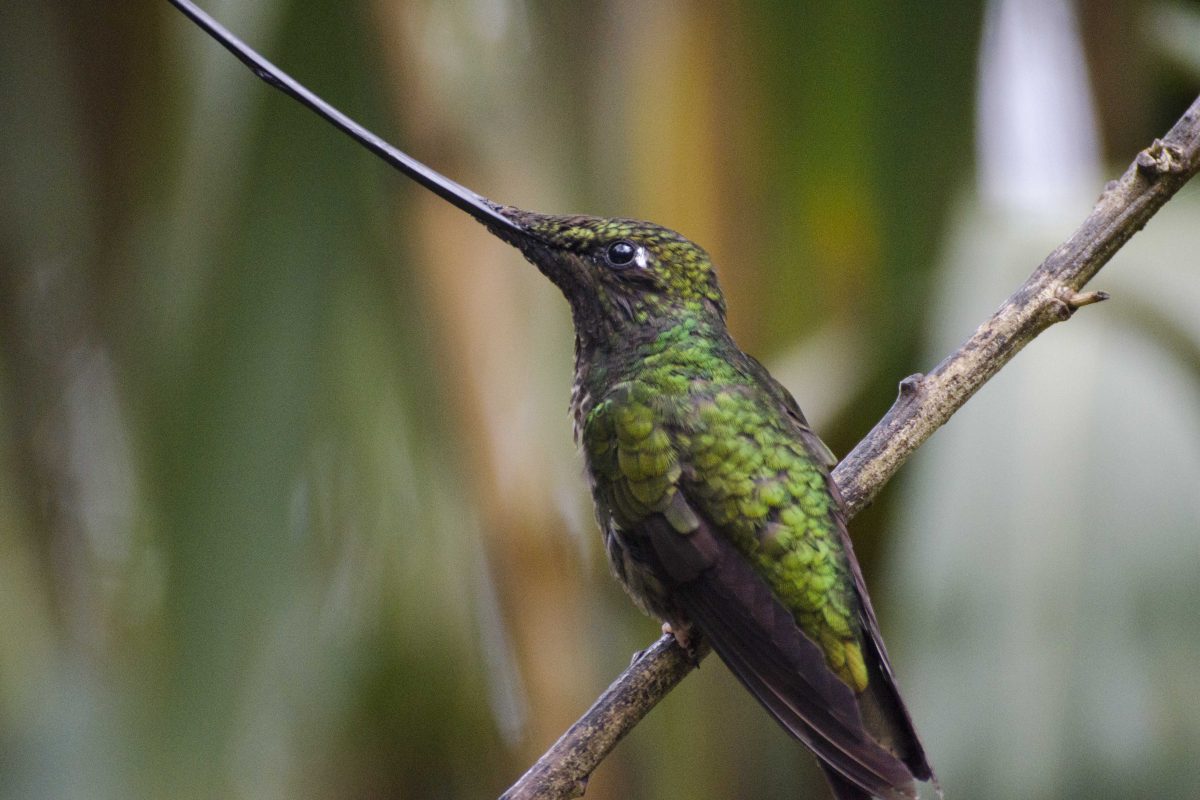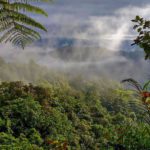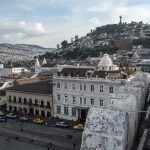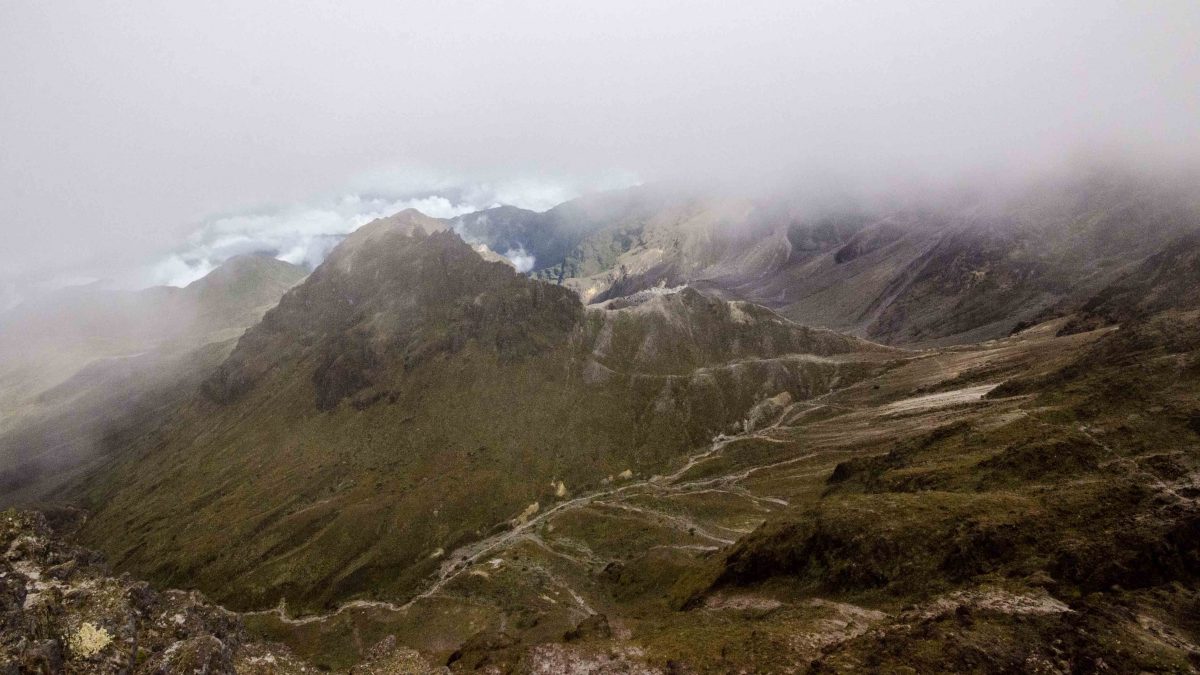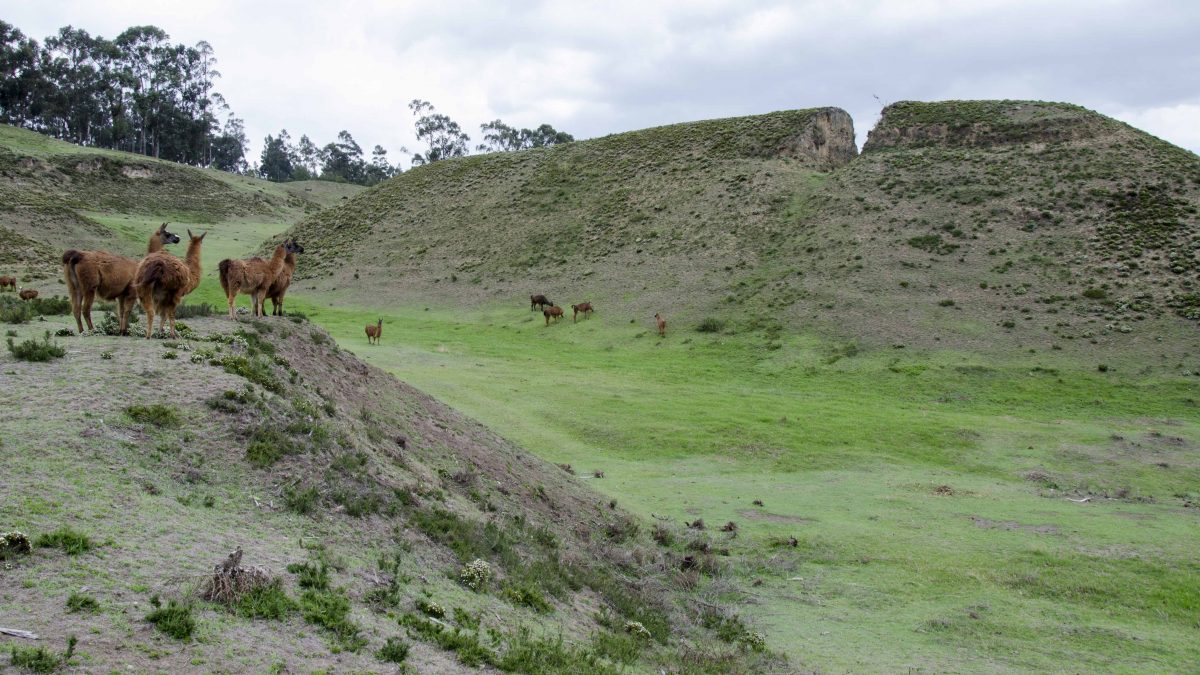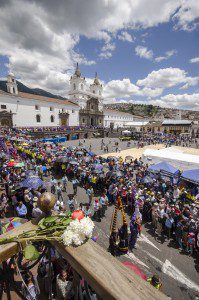 In Quito, Ecuador, Jesús del Gran Poder refers to a wooden sculpture from the 17th century that has become a symbol of faith to thousands of Quiteños, many of whom have accompanied the figure year after year during the grand procession that takes place on Good Friday in the historic center. And although the statue itself is very old, the procession is relatively new. It began in 1961 when the Franciscan Priest, Francisco Fernández, searched for a single image that would help his congregation connect to their faith and found it waiting in a storage room of the Iglesía San Francisco. He took the old, dusty statue and gave it new life and, in turn, Jesus del Gran Poder brought new followers to the church, both literally and figuratively.
In Quito, Ecuador, Jesús del Gran Poder refers to a wooden sculpture from the 17th century that has become a symbol of faith to thousands of Quiteños, many of whom have accompanied the figure year after year during the grand procession that takes place on Good Friday in the historic center. And although the statue itself is very old, the procession is relatively new. It began in 1961 when the Franciscan Priest, Francisco Fernández, searched for a single image that would help his congregation connect to their faith and found it waiting in a storage room of the Iglesía San Francisco. He took the old, dusty statue and gave it new life and, in turn, Jesus del Gran Poder brought new followers to the church, both literally and figuratively.
This aged statue travels about 55 city blocks every year. The entire path is lined with people waiting to see it. As it passes, many of the watchers will join the procession from behind and complete the route that goes by the Plaza Grande, the Antiguo Círculo Militar, and continues up, passing the park in front of the Basilica del Voto Nacional, until it reaches José Riofrio where the procession will return to Plaza San Francisco via Venezuela, passing once again the Basílica and then the Palacio de Carondelet before reaching the steps of the church.
 The entire route is approximately 5 kilometers long. Many of the penitents walk the route barefoot, some dragging heavy metal chains, others carrying heavy loads. The most difficult passage is for those who attempt to shoulder Christ’s cross. Upon the return, the small pillow meant to help support the weight of the cross no longer helps protect sore shoulders, despite shifting the cross from side to side. Many accept help from fellow penitents and several carry the cross together. This year, one Christ fell to the ground unable to continue and found himself tied to the cross and carried atop the backs of his fellow parishioners.
The entire route is approximately 5 kilometers long. Many of the penitents walk the route barefoot, some dragging heavy metal chains, others carrying heavy loads. The most difficult passage is for those who attempt to shoulder Christ’s cross. Upon the return, the small pillow meant to help support the weight of the cross no longer helps protect sore shoulders, despite shifting the cross from side to side. Many accept help from fellow penitents and several carry the cross together. This year, one Christ fell to the ground unable to continue and found himself tied to the cross and carried atop the backs of his fellow parishioners.
The procession begins and ends at the entrance to one of the oldest churches in Quito, the Iglesía del San Francisco, which is also home to Jesús del Gran Poder. Hundreds of penitents, most dressed in dark purple robes with coned hoods and therefore called Cucuruchos, exit the church first, many holding images of the Crucifixion or cradling small dolls meant to represent the baby Jesus. Several different versions of Christ carrying the cross, accompanied by Roman Soldiers, also join the procession. Towards the end are the Verónicas, women dressed in purple dresses with purple veils. The origin of Verónica comes a story that never made the Bible. The story says that Verónica used her veil to wipe the sweaty brow of Jesus and his is image later appeared on the cloth.
- Cucuruchos outside the Iglesía San Francisco, Historic Center, Quito, Ecuador
- Verónicas outside the Iglesía San Francisco, Historic Center, Quito, Ecuador
After the Verónicas come wooden statues of sainted figures, including San Juan Bautista and the Virgin Mary, each receiving the pomp and circumstance of a head of state. The statues are accompanied by members of the church and people along the parade route toss rose petals and long stemmed flowers in their path. And at last, after hundreds of people have exited the church door, Jesús del Gran Poder appears, held aloft by members of the Culto del Jesús del Gran Poder. His pilgrimage through the streets of Quito begins. His feet, already bedecked by roses, are gifted even more along the parade route. A literal sea of people follow him but are prevented from approaching by a cordon of police in their bright yellow green vests. Together, everyone tours the city.
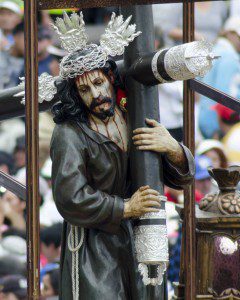 Every step of this procession is a reminder of Christ’s path to Calvary. The wooden statue portrays Christ with a dark, heavy beard and long, flowing locks of ebony hair. His pale face is marred by streams of blood that trickle down onto his chest into his somber, inky robe. Tears fall down his cheeks. The wooden black cross is bedecked with finely molded silver ends. His crown of thorns is the same precious metal and hold three plates of intricately worked silver that appear to be flames from a distance but up close are more like scalloped shells and wavy knife blades.
Every step of this procession is a reminder of Christ’s path to Calvary. The wooden statue portrays Christ with a dark, heavy beard and long, flowing locks of ebony hair. His pale face is marred by streams of blood that trickle down onto his chest into his somber, inky robe. Tears fall down his cheeks. The wooden black cross is bedecked with finely molded silver ends. His crown of thorns is the same precious metal and hold three plates of intricately worked silver that appear to be flames from a distance but up close are more like scalloped shells and wavy knife blades.
This statue of Jesús del Gran Poder is a blend of both beauty and pain. Those images are repeated again and again in the Good Friday procession. The best examples were those families that walked this hilly route together. This year, I saw a married couple holding hands with chains binding the two together, the harmony of marriage tempered by the bonds of responsibility. It was a reminder that marriage is both sacred and incredibly difficult.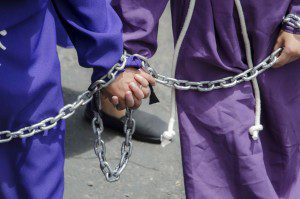 I saw a family with young children helping to carry a cross to which they had attached a photo of what looked to be their grandparents. This snapshot of family life was a reminder of youth and of age, of beginnings and of endings, of the A to Z of life.
I saw a family with young children helping to carry a cross to which they had attached a photo of what looked to be their grandparents. This snapshot of family life was a reminder of youth and of age, of beginnings and of endings, of the A to Z of life.
And to imagine that this procession takes place year after year. The people in the crowds that follow Jesús del Gran Poder may change but others will take their place. There will always be penitents willing to carry the load of a heavy cross and walk before him. There will always be veiled Verónicas and Cucuruchos. And there will always be people like myself, visitors attempting to understand the power of idols, the call to pilgrimage, and strength and will it takes to complete a painful task.
Information for this post came in part from these articles:

